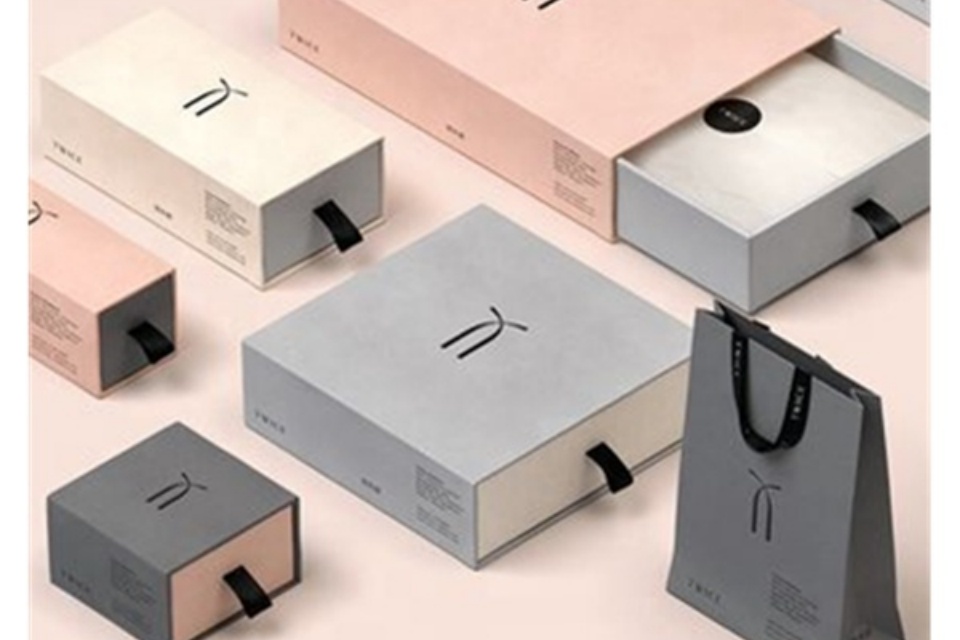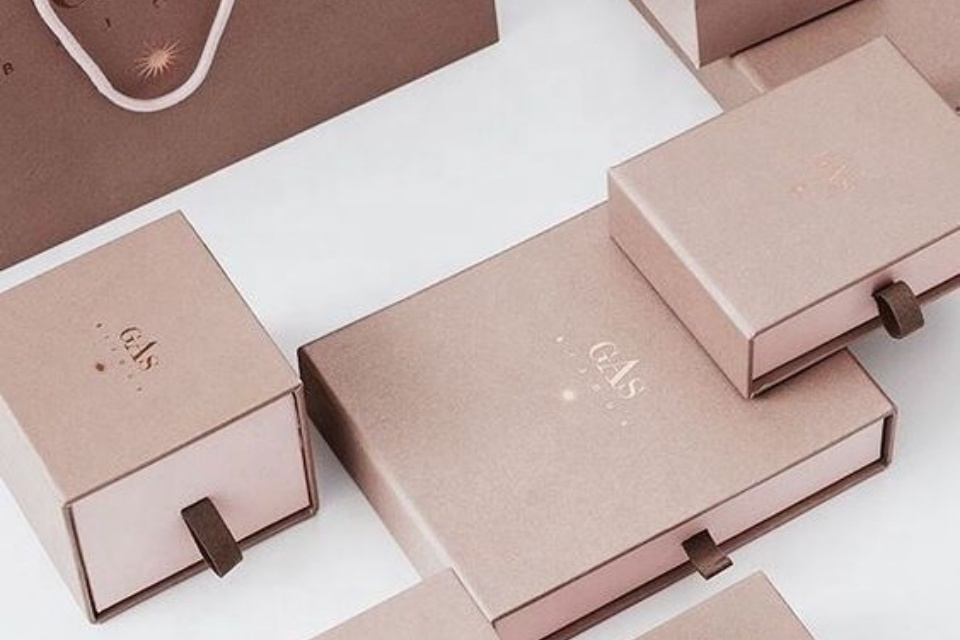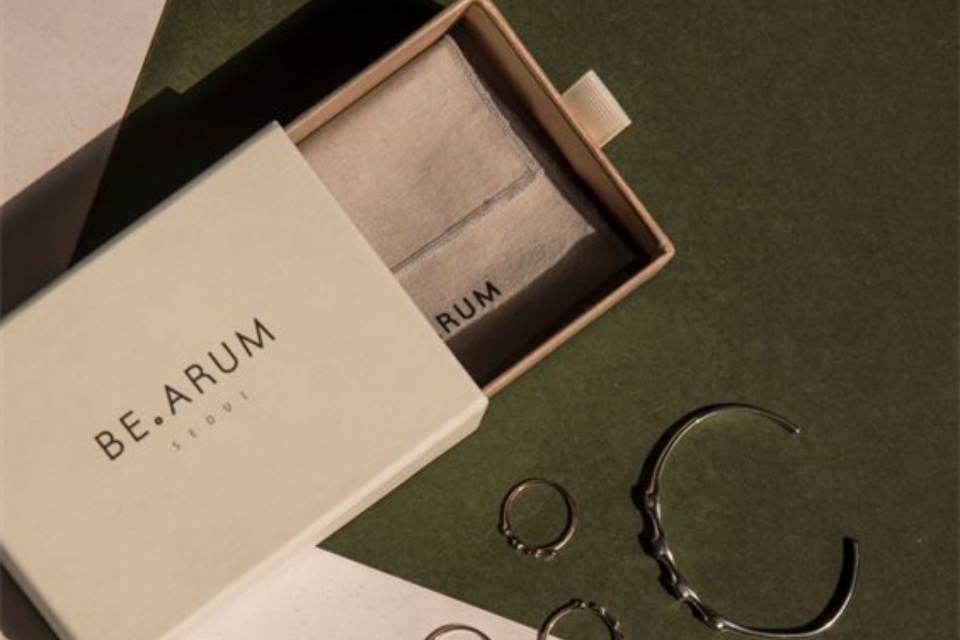Why Packaging Matters for Cosmetics
This blog explores why cosmetic packaging is vital for branding, protection, and sustainability, and how it directly influences consumer purchasing decisions.
Summary
Why Packaging Matters for Cosmetics examines the critical role of packaging in the cosmetics industry, highlighting its significance in product protection, branding, consumer convenience, and environmental impact. As a fundamental aspect of cosmetic products, packaging serves to safeguard the contents from contamination, preserve their quality, and enhance user experience while also acting as a vital marketing tool that conveys brand identity and ethos to consumers. With a history that dates back to ancient civilizations, the evolution of cosmetic packaging reflects broader cultural trends, technological advancements, and changing consumer preferences over time.
The importance of packaging in cosmetics cannot be overstated, as it influences purchasing decisions and brand loyalty. Studies indicate that aesthetic appeal—shaped by design elements such as color and texture—plays a significant role in attracting consumers, with many admitting to making purchase choices based solely on packaging. Additionally, functional design that enhances usability is crucial for fostering positive customer experiences, further solidifying brand attachment. As sustainability becomes a growing concern among consumers, the cosmetics industry is witnessing a shift toward eco-friendly packaging solutions, such as biodegradable materials and refillable containers, which respond to increasing demands for environmental responsibility.
However, the cosmetics packaging sector faces notable challenges, particularly regarding plastic waste and resource consumption. The beauty industry is a significant contributor to global plastic pollution, producing approximately 120 billion units of packaging annually, many of which are non-recyclable. The complexity of materials used in packaging complicates recycling efforts and raises questions about the environmental impact of traditional practices. As a response, brands are actively seeking sustainable alternatives and innovative designs that minimize waste while appealing to eco-conscious consumers.
Ultimately, the interplay of aesthetics, functionality, and sustainability in cosmetic packaging reflects a dynamic landscape where consumer preferences shape industry practices. As brands navigate the challenges and opportunities presented by modern packaging trends, they continue to enhance the consumer experience while addressing pressing environmental concerns.
Table of Contents
Historical Context
The evolution of cosmetic packaging can be traced back to ancient civilizations, with significant developments noted in Ancient Egypt. During the Predynastic Period, the use of toiletry items began to take shape, featuring a variety of materials such as ivory, bone, stone, and pottery. Among the earliest artifacts were ivory combs and kohl spoons, which exhibited diverse shapes inspired by common themes like the ankh symbol, ducks, and lotus flowers.
In the Predynastic and Old Kingdom eras, small bowls were meticulously crafted, often utilized as unguent jars or kohl cosmetic vessels, reflecting a blend of practicality and artistry. The necessity for eye protection from the harsh desert sun led to the use of eyepaint and eyeliner, not only for aesthetic purposes but also as a functional tool in daily life, particularly among laborers working in flooded lands during the Nile’s inundation. The creation of cosmetic palettes, such as the famed Narmer Palette—which commemorates the unification of Upper and Lower Egypt—illustrates the significance of cosmetic items in both personal grooming and ceremonial contexts.
As centuries progressed, the cosmetic packaging landscape underwent transformative changes. The introduction of mass production and the widespread availability of plastics in the 20th century facilitated a new era of convenience and variety for consumers. Packaging design became an essential component of branding, allowing products to stand out in a crowded marketplace. The shift towards sustainable practices has gained momentum in recent years, responding to consumer demand for eco-friendly materials and innovative packaging solutions. This historical trajectory reflects an ongoing interplay between culture, functionality, and consumer preferences, shaping the packaging strategies employed by cosmetics brands today.

Types of Packaging
Packaging plays a crucial role in the cosmetics industry, serving multiple purposes including protection, branding, and consumer convenience. There are several types of packaging utilized throughout the lifecycle of cosmetic products, categorized primarily into primary, secondary, and tertiary packaging.
Primary Packaging
Primary packaging is the first layer that comes in direct contact with the product, ensuring its integrity and hygiene. This type of packaging is designed to keep the cosmetic product intact regarding its formula and texture. Common materials for primary packaging include glass, plastic, and metal, each chosen for their suitability in maintaining product quality. Glass is particularly favored for its non-reactive properties, preventing chemical reactions with active ingredients, while plastic offers versatility and lightweight options. Examples of primary packaging include tubes for lotions, jars for creams, and bottles for liquids.
Secondary Packaging
Secondary packaging surrounds primary packaging, providing additional protection during storage and transit. This layer often serves as a branding tool, displaying product information and enhancing shelf appeal. Types of secondary packaging include folding cartons, slip lid boxes, and cardboard boxes, which can be designed to reflect the brand’s identity and attract consumers. The main goal of secondary packaging is to ensure that the primary packaging is not compromised and that the product remains in optimal condition until it reaches the consumer.
Tertiary Packaging
Tertiary packaging refers to the bulk packaging used for transportation and logistics. This layer is essential for protecting products in larger quantities during shipping and storage. Tertiary packaging can include pallets, cardboard boxes, and shrink-wrapped bundles, designed to ensure that products arrive at retail locations or consumers’ homes without damage.
Eco-Friendly Packaging
As sustainability becomes increasingly important to consumers, the cosmetics industry is seeing a rise in eco-friendly packaging options. Biodegradable materials such as bamboo, paper made from limestone, and refillable containers are gaining popularity, although the majority of packaging still ends up in landfills. Brands are also adopting refill stations and smaller travel-friendly sizes to reduce waste and meet consumer demand for environmentally conscious products.
Specialized Packaging
Certain cosmetic products require specialized packaging solutions to enhance functionality. For example, compacts provide a portable option for powders and creams, while pouches and sachets are excellent for sampling products in smaller, user-friendly formats. Travel-size packages are increasingly favored by consumers, allowing them to carry essential beauty products conveniently while minimizing waste.

Functions of Packaging
Packaging serves multiple essential functions in the cosmetics industry, playing a crucial role in product protection, marketing, and brand identity.
User Experience
Another critical function of packaging is enhancing the user experience. Consumers appreciate packaging that is easy to open, dispense, and handle, particularly for personal care products that are part of daily routines. Ergonomic and accessible designs cater to consumer preferences and can influence purchasing choices, making the overall experience more enjoyable.
Product Protection
One of the primary functions of packaging is to protect the product from contamination, light, air, and temperature variations, which can degrade its quality and efficacy. This protection is vital for maintaining the integrity of cosmetic products, ensuring they remain safe and effective for consumer use. Packaging typically consists of several layers, including primary packaging (which houses the product), secondary packaging (providing extra protection), and tertiary packaging (used for bulk handling and transportation). The outer packaging is designed to safeguard products during transit, while inner packaging adds another layer of protection and display.
Marketing and Brand Communication
Packaging is a powerful marketing tool that communicates a brand’s ethos and aesthetic, creating an emotional connection with consumers. It contributes to building brand identity by visually representing what the brand stands for, which can foster brand loyalty and drive repeat business. The design elements, including colors, shapes, and materials, work together to convey messages about the product and attract the target audience. For example, minimalist and modern designs may appeal to consumers seeking elegance, while vibrant designs might attract a younger demographic.
Claim System
The packaging serves as a claim system that communicates product strengths and values to consumers. Claims such as “dermatologically tested” or “100% natural” help convey transparency and credibility, encouraging consumers to make informed purchasing decisions. A well-designed claim differentiates the product from competitors and reinforces the brand’s identity and mission. Labels also play a critical role by providing essential information, including ingredients, usage instructions, and certifications, which helps establish trust with customers.

Sustainability Considerations
In today’s market, sustainability is becoming increasingly important. Brands that invest in eco-friendly packaging materials and practices not only align with consumer values but also contribute to reducing waste and environmental impact. The integration of sustainable processes throughout the product lifecycle—from production to disposal—reflects a brand’s commitment to environmental responsibility, further enhancing its appeal to conscious consumers.
Environmental Impact
The environmental impact of cosmetic packaging is significant, with the industry contributing to various forms of pollution and resource depletion. Each year, the beauty industry produces approximately 120 billion packaging units, a substantial amount of which is non-recyclable, further exacerbating global pollution issues related to plastics.
Plastic Waste and Pollution
Cosmetic packaging is a major source of plastic waste, with two widely used types being Acrylonitrile Butadiene Styrene (ABS) and Styrene Acrylonitrile (SAN). These materials are common in hair care and skincare products. While they offer flexibility and durability, their non-biodegradable nature results in long-term environmental pollution, as they persist in ecosystems and can break down into harmful microplastics. Microplastics, small particles that can infiltrate waterways and soil, pose risks to wildlife and human health. The cosmetic industry, therefore, plays a role in not only contributing to plastic waste but also in the pollution of oceans and natural habitats, impacting biodiversity.
Resource Consumption
The production of plastics for cosmetic packaging requires substantial resources. The beauty industry is one of the largest consumers of water, using around 10.4 million tons in 2020 alone. Additionally, the extraction and processing of petroleum-based plastics contribute to climate change, further highlighting the environmental costs associated with conventional cosmetic packaging materials. Furthermore, about 70% of beauty products contain palm oil, whose production is linked to significant deforestation, creating further ecological ramifications.
Challenges in Recycling
One of the primary challenges of sustainable packaging in cosmetics is the complexity of materials used. Many cosmetic products, such as pressed powder compacts, can contain multiple components made from different materials, complicating the recycling process. When various materials are mixed, separating them for effective recycling becomes problematic, leading to a higher likelihood of disposal in landfills instead of recycling. This issue is compounded by the widespread use of single-use plastics and microplastics in the industry, which contribute to the overall pollution crisis.
Sustainable Alternatives
To mitigate these environmental impacts, the beauty industry is gradually shifting towards more sustainable packaging solutions. This includes the adoption of biodegradable packaging materials, which can break down naturally and reduce landfill waste. Brands are also encouraged to explore refillable and reusable packaging options, which not only minimize waste but also promote a circular economy within the industry. Companies like Aveda are already utilizing post-consumer recycled plastics in their packaging and collaborating with environmental initiatives, showcasing a path towards more sustainable practices.

Trends in Cosmetic Packaging
Sustainability and Eco-Friendly Innovations
A significant trend in cosmetic packaging is the shift towards sustainability and eco-friendly materials. Many brands are exploring innovative packaging solutions that not only reduce environmental impact but also enhance the consumer experience. For instance, some companies are utilizing biodegradable materials, such as bioplastics derived from algae or cornstarch, which can be composted after use. Additionally, refillable containers are gaining popularity, allowing consumers to purchase refills instead of new products, thus minimizing packaging waste and promoting long-term customer engagement.
Design Aesthetics
The visual appeal of cosmetic packaging plays a crucial role in attracting consumers. Brands are increasingly focusing on unique design elements that convey their identity and values. This includes the use of vibrant colors, intricate patterns, and textures that create a sensory experience for the consumer. Minimalist designs are also on the rise, as they provide a sleek and modern look while allowing the product to stand out on shelves. For luxury products, high-end materials such as glass or brushed metal are favored to convey sophistication and quality.
Technology Integration
Advancements in technology are transforming the cosmetic packaging landscape. Modern design software and 3D printing allow brands to create virtual prototypes, reducing the need for physical samples and enabling experimentation with sustainable materials. Automation and AI-driven manufacturing processes are streamlining production, minimizing waste, and ensuring that eco-friendly materials are utilized effectively. Moreover, innovations such as airless pumps and specialized applicators enhance user convenience and product effectiveness, catering to consumer demands for practicality.
Consumer Engagement
Engaging consumers through packaging is becoming increasingly important. Brands are designing packaging that not only protects the product but also tells a story and fosters a connection with the consumer. This can include personalized designs or packaging that incorporates interactive elements, thereby enhancing the overall user experience. As consumers become more discerning, the packaging must resonate with their lifestyle and values, leading to stronger brand loyalty and increased sales.
Case Studies
Sustainable Innovations in Cosmetic Packaging
Case Paper has been actively exploring sustainable alternatives to traditional packaging materials. They are focusing on biodegradable and compostable films, with plans to have at least one viable option available for commercial use by 2025. Jonathan Hummer, the Director of Technical Sales at Case Paper, emphasized the necessity of maintaining the physical properties of film while minimizing environmental impact. This challenge arises from the continued demand for film-laminated packaging, which provides functional advantages despite the shift away from single-use plastics.
In addition to these initiatives, Case Paper has introduced its own recyclable laminate called LuMet™ transfer metallized film, further enhancing its commitment to eco-friendly packaging solutions in the cosmetics industry.
Consumer Perception and Packaging Design
Research indicates that packaging design significantly influences consumer purchasing decisions, especially in the cosmetics sector. Studies highlight that various design elements, such as shape, color, and imagery, correspond to consumers’ perceptions and preferences, particularly among younger demographics. For instance, the visual appeal of packaging can impact a consumer’s emotional response and their perception of product quality, leading to increased purchase likelihood.
Cosmetic brands have recognized the importance of aligning their packaging with consumer expectations. Companies like Glossier and Fenty Beauty have tailored their packaging to resonate with specific market segments, effectively communicating brand values of simplicity and inclusivity, respectively. This approach not only enhances brand identity but also fosters a deeper connection with consumers, reflecting the diverse needs of today’s beauty market.
The Role of Packaging in Brand Communication
The packaging serves as a vital touchpoint for brands to communicate their core principles and engage with consumers. It encapsulates the product’s essence and conveys important information about the brand’s values, especially regarding sustainability. As consumers increasingly prioritize eco-conscious choices, brands that adopt sustainable packaging practices are likely to bolster their reputation and appeal among environmentally aware shoppers.
Consumer Perspectives
The design and functionality of packaging play a pivotal role in shaping consumer perceptions and purchasing decisions in the cosmetics industry. Research indicates that packaging design significantly influences how consumers evaluate products, often affecting their overall experience and satisfaction.
Aesthetic Appeal
Visual elements such as colors, fonts, and imagery are critical in attracting consumer attention and conveying brand identity. Studies suggest that eye-catching and aesthetically pleasing packaging can enhance a product’s appeal, increasing the likelihood of purchase. For instance, a 2018 survey revealed that 72% of American consumers admitted to making purchase decisions based on packaging design alone. Moreover, the psychological implications of color play a crucial role; different colors can evoke specific emotions and resonate with consumers’ desires and preferences, thus influencing their choices at the point of sale.
Functional Design
Beyond aesthetics, the practicality of packaging greatly impacts consumer satisfaction. Features such as ease of opening, storage convenience, and user-friendliness contribute to a positive customer experience, fostering brand loyalty. Effective packaging must not only be visually appealing but also functional, ensuring that consumers find it easy to use and store their cosmetic products. Research emphasizes that well-designed packaging can enhance perceived product efficacy and reliability, thereby reducing purchase hesitation and building trust with the brand.
Brand Alignment and Authenticity
Consistency between packaging and brand identity is vital for fostering consumer trust and loyalty. Packaging that authentically represents a brand’s values—especially in terms of sustainability—can appeal to eco-conscious consumers, thereby enhancing brand equity. A commitment to transparent packaging that communicates the product’s ingredients and sustainability efforts resonates with today’s consumers, who increasingly prioritize authenticity in their purchasing decisions.
Psychological Impact
The psychological impact of packaging in the cosmetics industry plays a crucial role in shaping consumer perceptions and influencing purchase decisions. Packaging design is not merely a functional necessity; it acts as a powerful communication tool that conveys the brand’s values, quality, and exclusivity to consumers, thereby enhancing perceived value and encouraging loyalty.
Perceived Value and Consumer Psychology
Perceived value, which refers to a consumer’s subjective assessment of a product’s worth, is significantly affected by packaging. Luxury beauty brands often utilize high-quality materials and elaborate designs to create an impression of exclusivity and prestige, which can lead consumers to associate their products with superior quality and efficacy. For instance, packaging that incorporates elegant features and distinctive design elements can trigger emotional responses, evoking feelings of joy or nostalgia, and ultimately influencing the consumer’s decision to purchase. This emotional connection fosters brand loyalty, as consumers are more likely to return to brands that resonate with their personal values and aspirations.
Emotional Triggers and Brand Loyalty
The connection between packaging and emotions is vital in the cosmetics industry. Packaging that effectively taps into emotional triggers can drive purchase intent and enhance brand affinity. Elements such as color psychology, design aesthetics, and tactile experiences all contribute to the overall consumer experience. For example, a beautifully crafted lipstick tube can elicit feelings of luxury and desire, leading to impulsive purchases. Furthermore, consistent and recognizable packaging across product lines strengthens brand identity, ensuring easy recognition and reinforcing trust among consumers.
The Role of Sustainability and Transparency
As consumer awareness regarding sustainability increases, the demand for transparency in packaging has also grown. Brands that clearly communicate their packaging materials’ environmental impact and recyclability can build trust and enhance their perceived value among eco-conscious consumers. Certifications such as FSC and eco-labels not only demonstrate a commitment to sustainability but also align with the values of a growing segment of the consumer market that prioritizes eco-friendly practices. This alignment between packaging and consumer values is essential for fostering loyalty in today’s competitive landscape.
